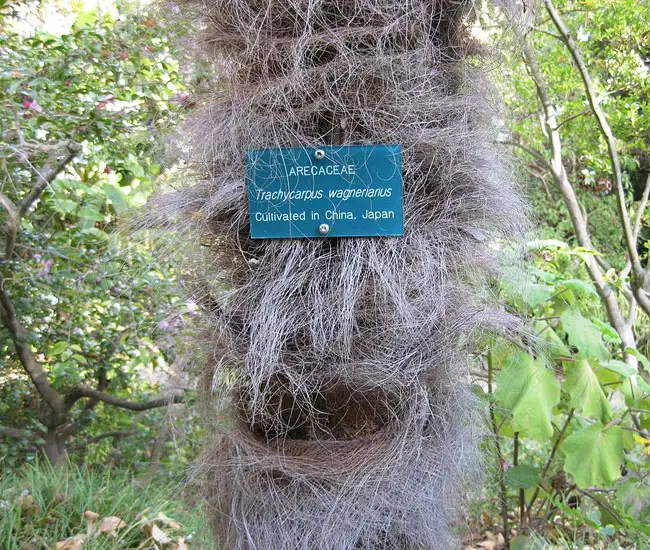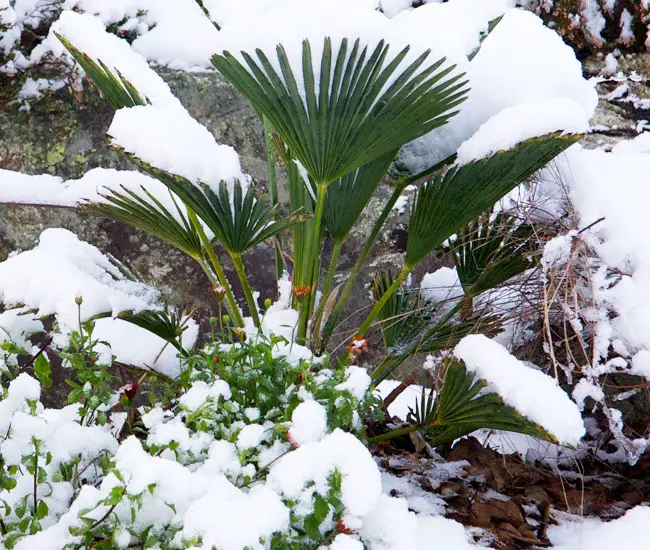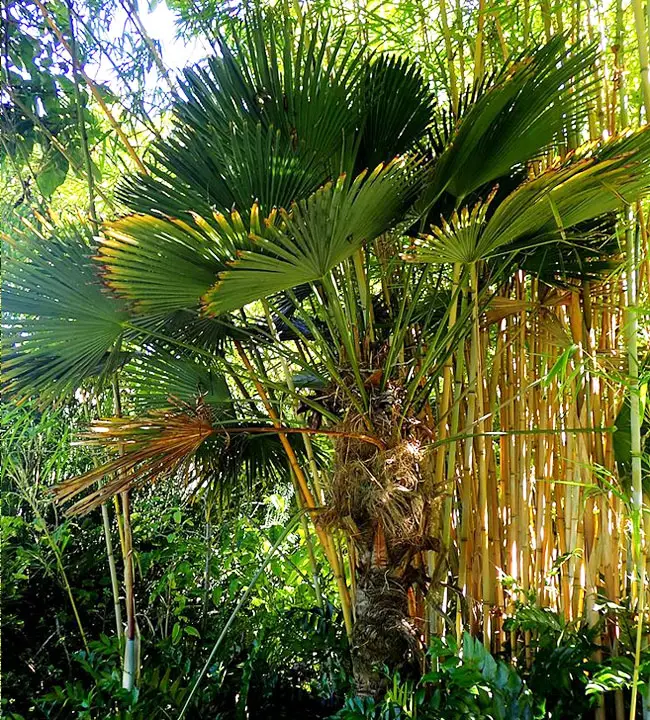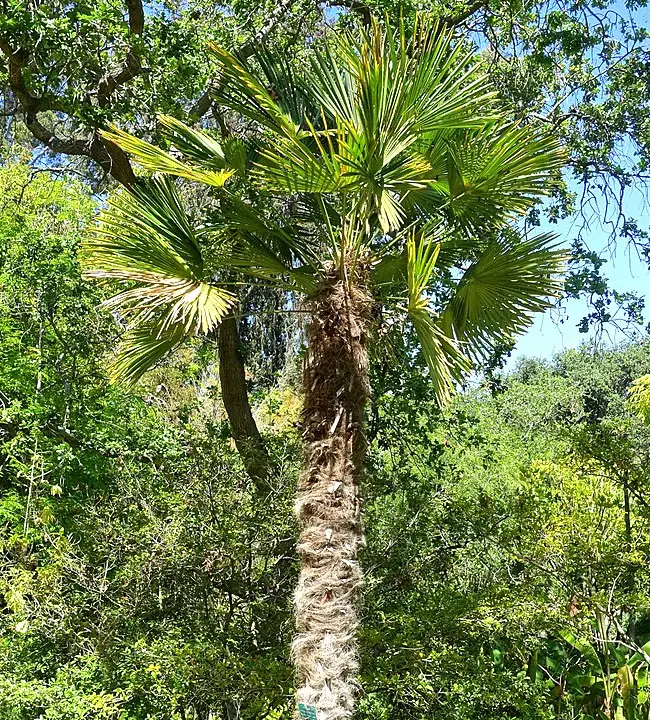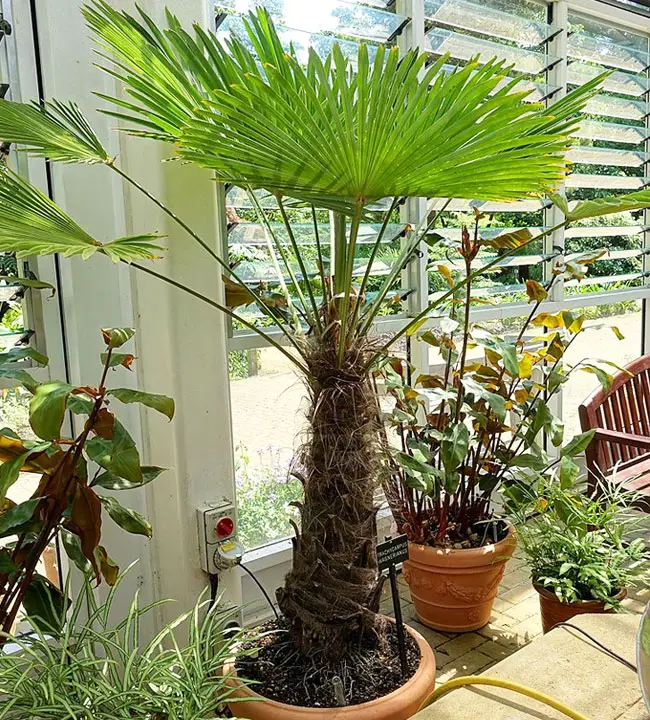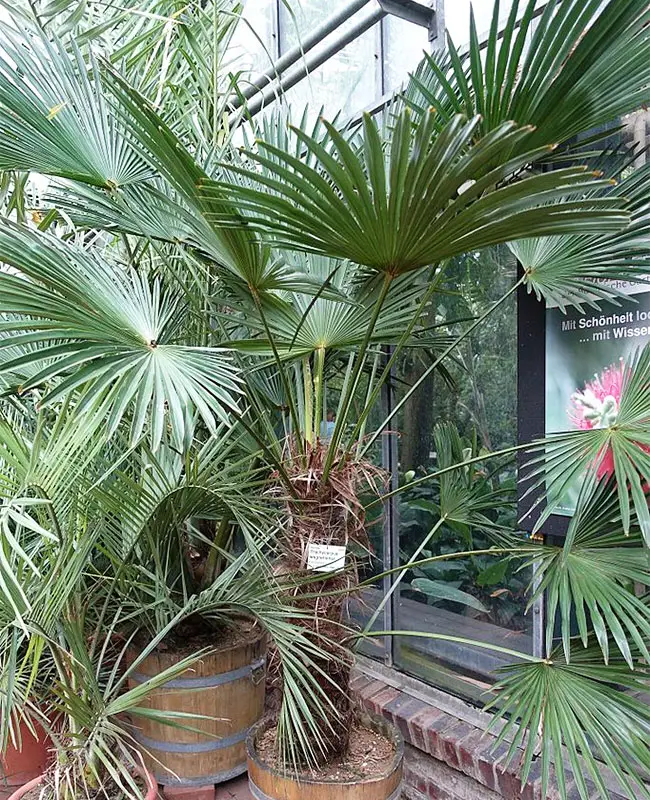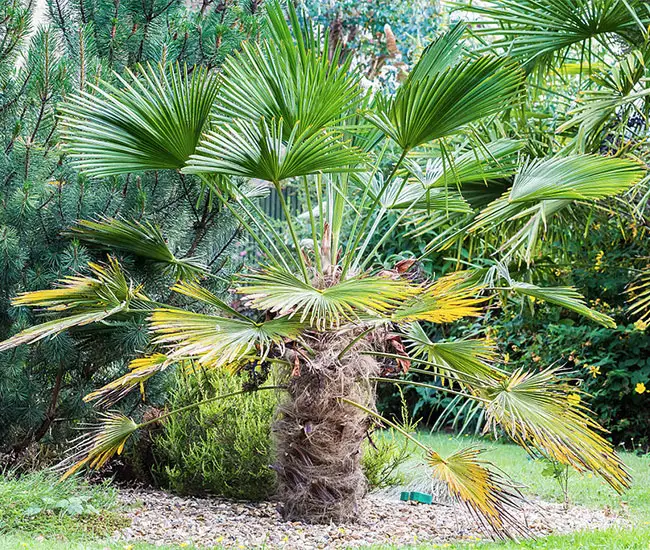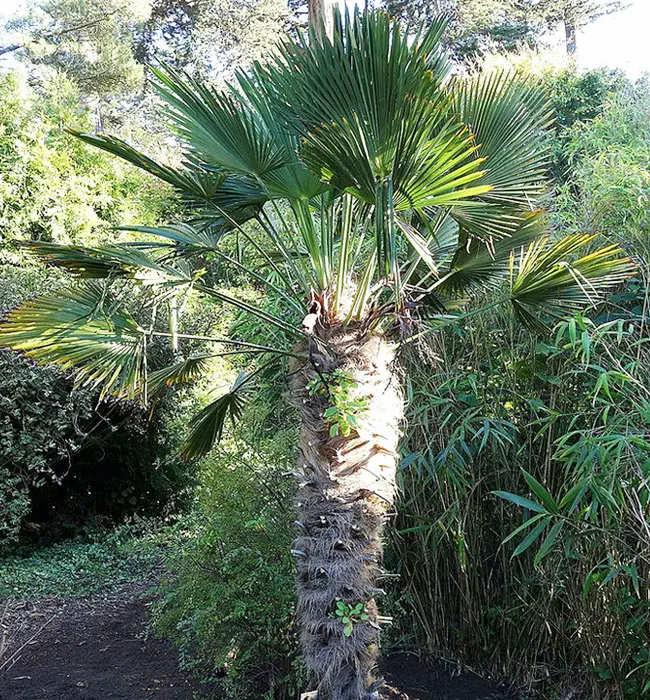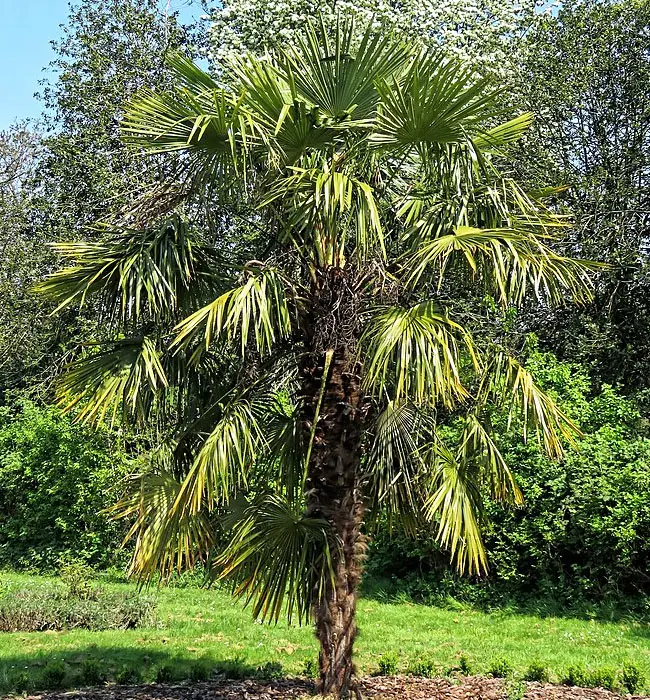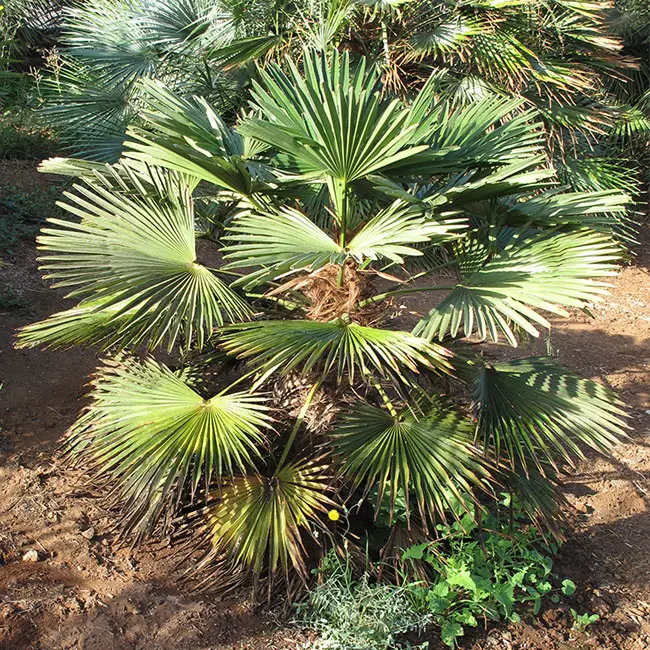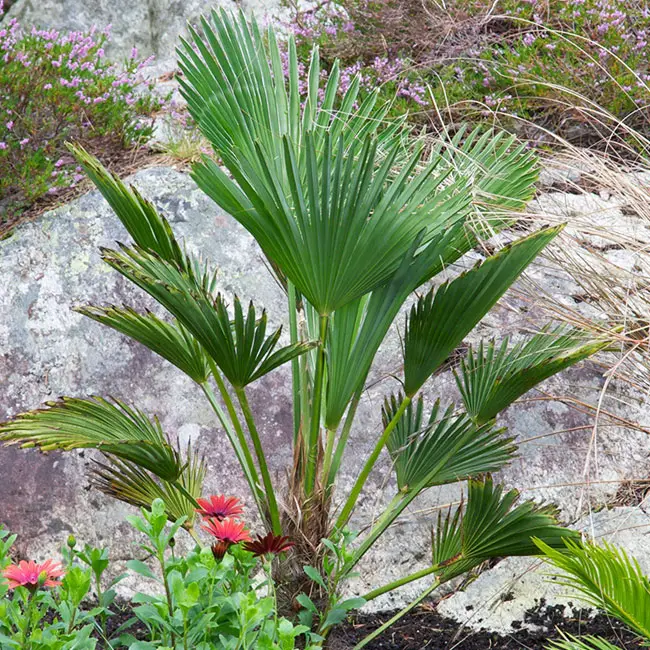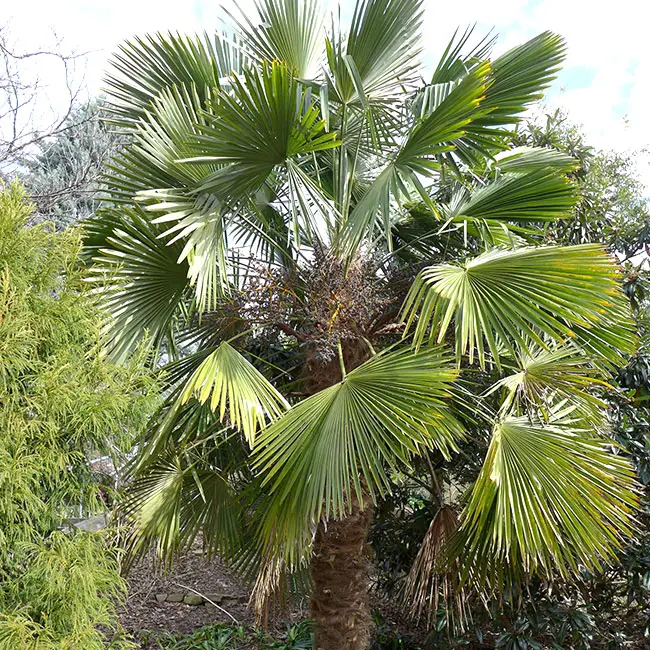
The Miniature Chusan Palm Tree, scientifically known as Trachycarpus wagnerianus, is an excellent choice for both indoor and outdoor cultivation due to its remarkable durability and cold-hardiness, making it a perfect addition to landscapes within USDA zones 8-10b.
This palm can thrive in a variety of states, including Alaska, Alabama, Delaware, Maryland, Massachusetts, Mississippi, New Jersey, New York, Oklahoma, and Tennessee, among others. Moreover, it requires minimal maintenance and is remarkably disease-resistant, sharing several characteristics with the Windmill Palm.
Quick Facts:
| Scientific name: | Trachycarpus wagnerianus |
| Common names: | Miniature Chusan Palm, Wagner’s Windmill Palm, Waggie Palm, Waggie. |
| Origin: | Native to central and eastern China. |
| Growth Rate: | Slow. Up to 20-25 ft tall and 4-6 ft wide. |
| Cold Tolerance: | USDA Zones 8a (10 to 15 F) to 10b (above 35 F). |
| Light Req: | Full sun. |
| Water Req: | Low. |
| Soil Req: | Widely adaptable. |
| Fruit: | Yes. Purple black. |
| Propagation: | By seed germinating in 2 months. |
Identifying Characteristics of the Miniature Chusan Palm
Initially, its growth rate is relatively slow, but after 3-4 years, it experiences a burst of rapid growth. Characterized by a single brown trunk, measuring 8-14 inches in diameter and covered in fibrous leaf bases, the Miniature Chusan Palm Tree possesses round, stiff, and deeply-cut dark green leaves.
These leaves are relatively small, approximately 2 feet in diameter, and grow on petioles that are 2-3 feet long, giving the palm a more compact appearance. As the leaves mature, they transition from nearly circular to hemispherical in shape.
Flowers and Fruits of the Miniature Chusan Palm
The Miniature Chusan Palm produces petite yellow flowers, with male and female flowers appearing on separate plants, as it is dioecious. Its fruits, while not edible, have an oblong shape and turn purple-black when fully ripe.
Caring for the Miniature Chusan Palm
Trachycarpus wagnerianus is considered a medium-sized palm, capable of reaching heights between 20 to 25 feet and widths of 4 to 6 feet.
One of its most impressive features is its remarkable cold hardiness, tolerating temperatures as low as 10°F. It thrives best within USDA Zones 8a (with temperatures ranging from 10 to 15°F) to 10b (above 35°F) and prefers full sun exposure, alongside rich, well-draining soil with adequate moisture.
To prevent nutritional deficiencies, it’s advisable to apply high-quality palm fertilizer with a continuous-release formula twice a year during the growing season.
Propagation of the Miniature Chusan Palm is typically achieved through seeds.
Miniature Chusan Palm Pictures
